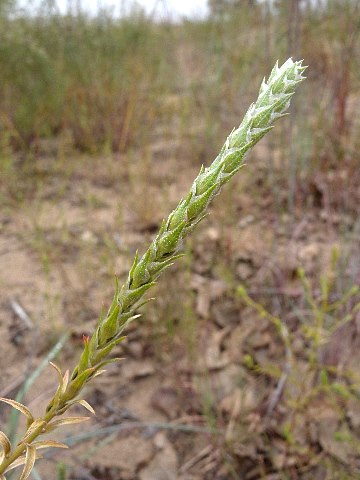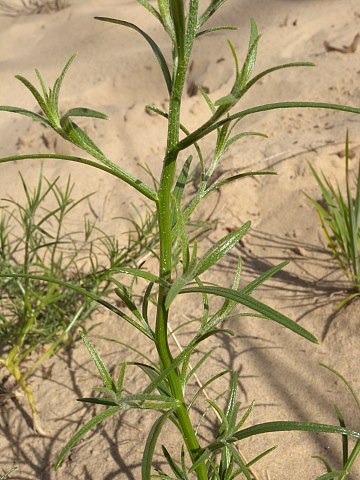
Cultivation: The preference is full sun, mesic to dry conditions, and very sandy soil. Most growth and development occurs during the summer.
Range & Habitat: The native American Bugseed is a rare plant in Illinois; it is found along Lake Michigan and scattered localities elsewhere within the northern half of the state (see Distribution Map). Habitats include beaches and sand dunes along Lake Michigan, sand dunes along the Mississippi and Illinois Rivers, dry sand prairies, sandy hill prairies, sandy areas along railroads, and barren waste areas. This plant prefers disturbed sandy areas that are subject to wind erosion where vegetation is sparse.
Faunal Associations: Two grasshopper species, Melanoplus foedus (Foedus Grasshopper) and Melanoplus packardii (Packard's Grasshopper), sometimes feed on the foliage of bugseed (Corispermum). These grasshoppers are found in west-central and northwest Illinois. Information about floral-faunal relationships for this genus is very limited and more field work is needed.

Photographic Location: Sand dunes along Lake Michigan in Indiana Dunes State Park.
Comments: This is one of the typical beach plants along southern Lake Michigan. For a long time, most authorities regarded this plant as an introduced European species, Corispermum hyssopifolium (Hyssop-Leaved Bugseed), but there is growing archeological evidence that bugseed has been present in North America for thousands of years. Because of minor differences in the characteristics of North American herbarium specimens from their counterparts in Europe, several native species of bugseed have been described. One of these is the plant that is described here, Corispermum americanum (American Bugseed). Another species in this genus that is sometimes found in Illinois, Corispermum nitidum (Shiny Bugseed), has more narrow floral bracts that reveal its winged achenes. The bracts of American Bugseed, in contrast, hide most of its winged achenes from outside observation.